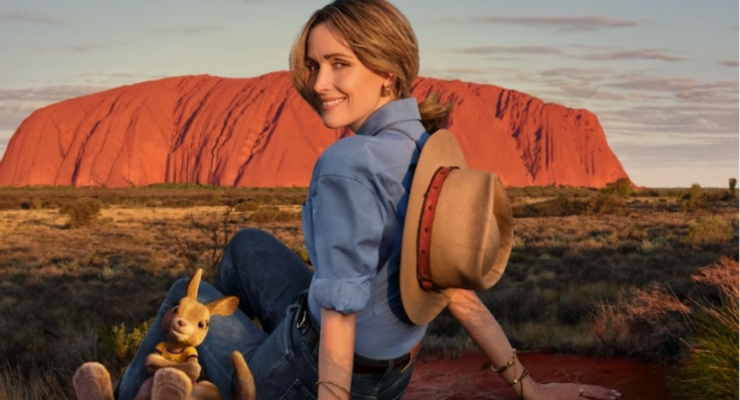
Trade and Tourism Minister Don Farrell unveiled a CGI kangaroo going by Ruby the Roo as “the new Paul Hogan” of Tourism Australia. He made the introduction in Tokyo, Japan, yesterday — the home of the mascot.
Farrell said the non-living larger-than-life brand ambassador voiced by actor Rose Byrne was there to send a “positive and happy message about the opportunities to come to Australia”, but the launch location is no happy coincidence. Mascots — called yuru-kyara — form a huge part of Japanese culture.
In Australia, each state and territory comes has its own coat of arms, badge (of honour), flower, animal, colour(s), and — in case there was any misconception about the enduring influence of the crown — tartan (although there is no tartan for the Northern Territory).
In Japan, all 47 prefectures have their own mascot — and often more than one. Osaka has more than 40 furry representatives. Talk about a healthy dose of democracy.
In the most laid-back and lovable way, each character is designed to represent its region in both body and movement. These characters play a huge role promoting regional tourism in Japan.
“Mascots are used to promote everything in Japan,” Marina Kinno from Japanese travel communications agency TARO told Crikey. “Tourism, food, they’re about trying to invite more people to different areas of Japan.”
In April last year, Japanese officials even launched a cute little nuclear character called Tritium to help explain the release of radioactive wastewater into the ocean. It was there for PR purposes with a brief to assuage anxieties, but even yuru-kyara have their limits. A day later Tritium was terminated and an apology was issued.
It was more of a success story in April this year. During a state visit to Japan, New Zealand Prime Minister Jacinda Ardern was greeted by two giant melancholy kiwifruits, dancing in slow lockstep to chamber music.
So is Australia trying to take a leaf out of the Japanese playbook? Is it trying to speak their language? And will it work?
Kinno says that depends: “If this CGI character is going to be a furry character that people can meet, then yes. If not, it’s less powerful. But people in Japan tend to relate more to imaginary characters than real people, so this is definitely a move in the right direction.”
What do you think of Ruby the Roo? Let us know by writing to letters@crikey.com.au. Please include your full name to be considered for publication. We reserve the right to edit for length and clarity.








At last, a promotion of Australia that isn’t an embarrassment. </sarc>
Calling it “radioactive wastewater” is a wild exaggeration. There is more radioactive K-40 in the sea off Japan than there is H-3 in the stored groundwater. It is only being stored because of continuing fear mongering, such as this article indulges.
Exaggeration & fearmongering? – cue the M.A.S.H. theme song.
“Incoming casualties!”, eh? In hindsight, there were no fatalities due to radiation at Fukushima, but hundreds of people were dying, stressed by terror, all over Japan. To quell the panic, the Prime Minister ordered an evacuation even though his medical experts told him not to. The panic died down, but the evacuation killed more than a thousand frail people. Since then, social media has greatly increased our capacity to spread terror and increased the difficulty for our leaders to damp it down.
It looks like a rabbit designed by the people who thought Poochie was a good idea.
Ruby the Roo, the new (although less than exciting or original) Australian yuru-kyara might work in Japan where such things are part of the culture, but how are Ruby’s talents, such as they may be, going to go down in the US or European cultures? Or will there be another approach for those markets of potential tourists? Keep us in the loop, will you, Julia?
How much taxpayer money are we throwing at this debacle?
Great income for the advertising industry but the most effective is authentic ‘word of mouth’ by those who have visited Oz &/or organic film/tv content, music etc., promoted by digital marketing; but that would cut many stakeholders out of the loop, even if more effective.